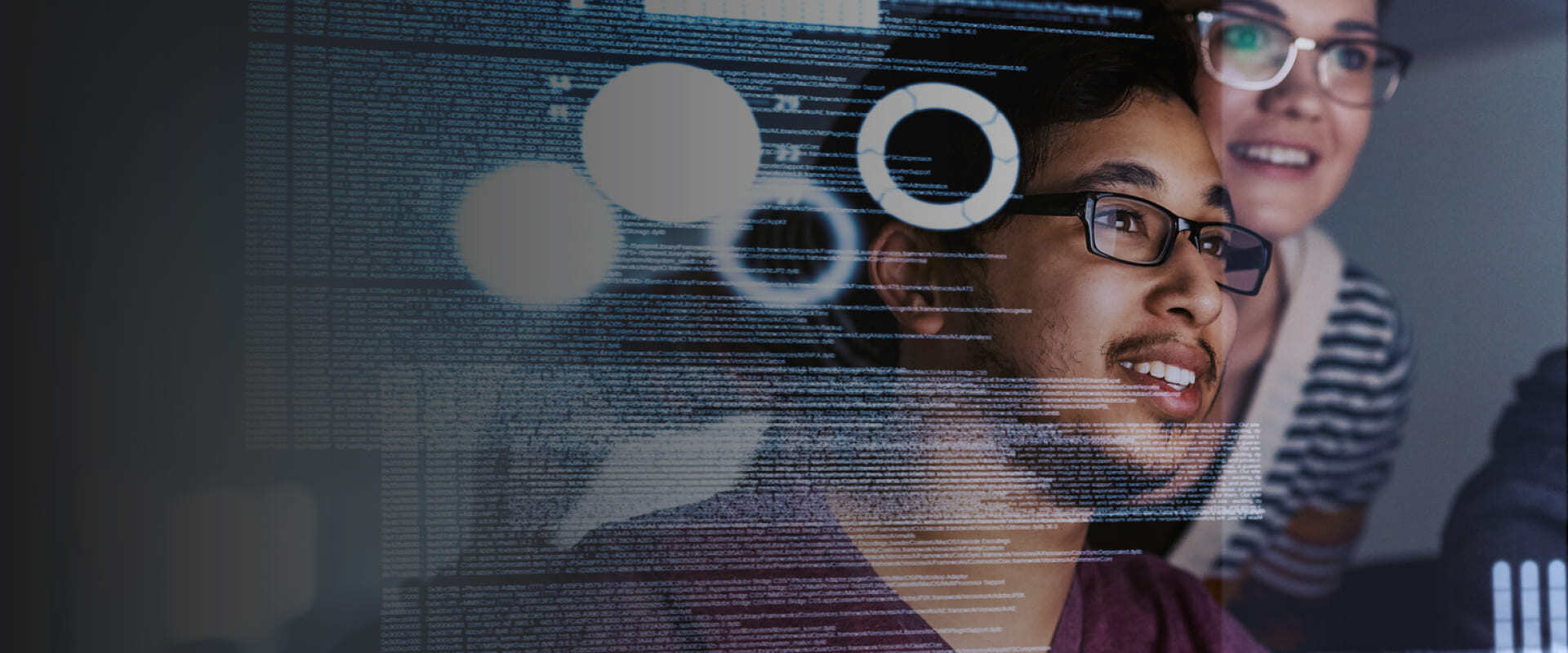Atlas Systems Named a Representative Vendor in 2025 Gartner® Market Guide for TPRM Technology Solutions → Read More

Cyber Threats and Security: What Every Organization Should Know


17 min read | Last Updated: 22 Aug, 2025
Cyber threats are everywhere today, from fake emails that trick you into clicking a link, to complex attacks that shut down large companies. These threats don’t just target big businesses or governments. Regular people, small businesses, hospitals, schools, everyone can be affected.
A cyber threat refers to any possible danger that could harm your computer, steal your data, or break into your systems. These threats can come in many forms, some are obvious, others are sneaky. Some attacks are meant to steal money, others to leak information or damage reputations.
In this blog, we’ll explain what cyber threats really are, look at the types of cyber threats, and share real-life cyber threats examples. You’ll also learn about cyber threat analysis, how these attacks affect people and organizations, and what cyber threat protection and prevention look like in simple terms.
Where Do Cyber Threats Come From?
Cyber threats can come from many places. Sometimes, they are caused by hackers sitting in a different part of the world. Other times, they can come from people inside your own company who misuse access or make mistakes. In some cases, cyber threats don’t even start with people at all, they come from harmful software that spreads on its own.
Let’s look at some of the common sources of cyber threats:
- Cybercriminals: These are people who try to make money by stealing data, breaking into systems, or spreading malware. Their goal is usually to steal personal or financial information and sell it or use it for fraud.
- Hacktivists: Hacktivists hack for a cause. They may attack websites, leak documents or deface web pages to promote political or social messages.
- State-sponsored attackers: Some governments use hacking as a way to spy on other countries or disrupt their systems. These attacks are usually very advanced and hard to detect.
- Insider threats: Not all threats come from the outside. Sometimes, employees or contractors misuse access either by accident or on purpose. This could include leaking confidential data or clicking on a harmful link in an email.
- Automated attacks and bots: Cybercriminals often use bots, automated programs, to scan the internet for weak systems. These bots can try passwords, look for software that hasn’t been updated, or find open ports they can break into.
- Poor security habits: Even without hackers, bad practices like using weak passwords, ignoring software updates, or not using antivirus protection can create openings for threats.
So, cyber threats can come from anywhere, people, software, or careless habits. That’s why it’s important to stay alert and follow good cybersecurity practices at all times.
Read: Cyber Risk Management: What You Need To Know
What is Cyber Threat Intelligence?
Cyber Threat Intelligence (CTI) refers to the collection, analysis, and use of information about potential or existing cyber threats. It helps organizations understand who might attack them, how those attacks could happen, and what actions they can take to protect themselves.
Instead of just reacting after a cyberattack occurs, threat intelligence enables businesses to prepare in advance. It provides insights into hacker behavior, malware trends, attack techniques, and vulnerabilities, helping security teams detect, prevent, and respond to threats more effectively.
Why cyber threat intelligence matters
Cyber threats are growing more frequent. Businesses today are targeted by a range of attackers, from cybercriminals and ransomware gangs to state-sponsored hacking groups. Relying only on traditional security tools is no longer enough.
That’s where cyber threat intelligence makes a difference. It shifts your cybersecurity approach from reactive to proactive.
With good CTI, you can:
- Anticipate attacks: Understand what kinds of threats are most likely to target your business or industry.
- Respond faster: When an incident occurs, CTI helps you identify and address it quickly.
- Reduce risk: By staying informed about known threats and vulnerabilities, you can take preventive steps before attackers strike.
- Support compliance: Many regulatory standards now recommend or require the use of threat intelligence to improve cyber defense.
- Allocate resources better: CTI helps prioritize which threats are most dangerous so you can focus your security efforts accordingly.
Some Examples of Cyber Threats
Cyber threats can take many forms. Some are easy to spot, like a suspicious email, while others are hidden deep in your systems and run quietly in the background. These threats can target individuals, businesses, or even entire countries. Understanding real-world examples helps us recognize how these attacks happen and what kind of damage they can cause.
Below are some of the most common and impactful examples of cyber threats that businesses and individuals face today.
Phishing attacks
Phishing remains one of the most widespread cyber threats. In these attacks, scammers create fake emails or websites that appear real and legitimate, enticing users to share login credentials, financial data or other sensitive information. Phishing often serves as a gateway for deeper intrusions.
For example, in one campaign targeting Microsoft 365 users, attackers mimicked official login pages to steal credentials. Once the attackers gained access, they could move laterally within corporate systems, leading to more serious breaches.
Ransomware attacks
Ransomware encrypts vital data and demands payment in exchange for its release. A prominent case occurred on May 7, 2021, when the Colonial Pipeline—responsible for nearly half of the U.S. East Coast’s fuel supply—fell victim to the DarkSide ransomware group. Hackers accessed the system via a compromised VPN account without multi-factor authentication, stole about 100 GB of data, and encrypted critical billing infrastructure.
The company shut down operations for several days, issued a regional emergency declaration, and eventually paid approximately $4.4 million in Bitcoin to regain access. This incident highlights how ransomware attacks can disrupt critical infrastructure and trigger widespread societal impact.
Supply chain attacks and APTs
Some of the most insidious cyber threats exploit trust in widely used software. In late 2020, a sophisticated advanced persistent threat (APT) group, widely believed to be associated with Russian intelligence, compromised SolarWinds Orion, a popular IT management platform.
Attackers injected malicious code into a legitimate software update, which was then distributed to about 18,000 customers, including U.S. government agencies and Fortune 500 companies. The breach remained undetected for months, allowing attackers to access sensitive data across multiple networks. This attack, known as the SolarWinds supply chain breach, continues to serve as a stark reminder of how trusted systems can be weaponized against users.
Insider threats
Not all cyber risks come from outside actors. Sometimes, the threat arises from within an organization. Employees, contractors, or partners may unintentionally disclose sensitive data or, in rare cases, abuse access intentionally.
For instance, a former Amazon employee in 2020 used insider knowledge of the company’s cloud environment to covertly access data from millions of Capital One credit applications. This case highlights how trusted users with high-level access can become serious vulnerabilities when security controls fail to detect or prevent misuse.
Zero-day exploits
Zero-day exploits target vulnerabilities that are unknown to software vendors and unpatched. Attackers who discover these flaws can infiltrate networks before any fix is available, leaving organizations defenseless for a time.
One well-known zero-day incident involved Microsoft Exchange Server in 2021, when attackers exploited unknown vulnerabilities to steal emails and compromise thousands of networks globally. Because no defense existed at the time of discovery, this attack caused widespread disruption before patches were released.
Advanced Persistent Threats (APTs)
APTs involve long-term, targeted attacks conducted by highly skilled actors, often tied to nation-states or organized groups. These campaigns focus on gaining deep system access, collecting intelligence, and remaining undetected for extended periods.
The SolarWinds breach discussed above is one example; another is believed to be Operation Aurora, directed at tech and defense targets. APTs are dangerous because they combine stealth, sophistication, and persistence, often resulting in significant data theft or espionage.
Social engineering
Beyond technical hacking, social engineering exploits human behavior and trust. These attacks often involve deception to manipulate individuals into revealing information or granting access.
For example, attackers might pose as IT support staff and email or call employees, asking for credentials under the guise of resolving an issue. Even the most advanced systems cannot block this kind of breach when a user unknowingly hands access directly to an attacker.
Credential stuffing
Credential stuffing uses automated tools to test stolen username and password combinations across multiple services. Since many users reuse passwords, a leaked cred from one breach can unlock other accounts.
In 2019, attackers used credential stuffing to compromise over 500,000 Zoom accounts found on the dark web. Once inside, they gained unauthorized access to meetings, private data, or video content.
Read also: Best Threat Detection Tools for Stronger Security in 2025
Biggest Cyber Threats in 2025
We are already halfway through 2025 and the cyber threat environment is more advanced than ever. Ransomware syndicates, AI-powered scams, supply chain exploits, and insider risks all continue to grow more dangerous. Organizations must act now to strengthen defenses, understand emerging threat paths, and prepare proactive strategies.
AI-powered phishing and deepfake attacks
Generative AI is revolutionizing cybercrime. According to a McKinsey analysis, phishing attacks using AI-generated content surged 138% in 2023, thanks to tools that create hyper-realistic emails mimicking colleagues or trusted brands.
Affirming this, Axios recently reported that AI-generated scam emails struck users via Gmail, Outlook, and Apple Mail, often using data scraped from social profiles to craft personalized messages that bypass analysts’ filters, and collectively netting $16.6 billion in losses in 2024. These AI-backed messages are harder for users and traditional spam filters to detect, making phishing significantly more dangerous.
Ransomware-as-a-Service (RaaS) and double extortion
Ransomware remains one of the costliest threats in 2025, with Ransomware-as-a-Service models making sophisticated attacks more accessible to less skilled criminals. Gartner warns that double and triple extortion schemes, where attackers not only encrypt data but threaten to expose it publicly are now standard practice.
According to industry data, attackers demand ransom sums more than doubled between 2022 and 2024, with average demands reaching over $170,000 per incident in some sectors.
Supply chain attacks and zero-day exploits
Software supply chain attacks continue to escalate. A most commonly used attack on a widely used platform, e.g., third-party integration or cloud provider, can spread malware across thousands of organizations. This was starkly illustrated with Microsoft SharePoint vulnerabilities exploited by Storm-2603 in mid-2025, affecting over 400 government and corporate networks before patches were available.
The dangers of zero-day exposure remain high as vulnerabilities persist unpatched and attackers operate with greater automation and stealth.
AI-scaled credential attacks and automated scans
Automated attacks powered by AI are now the norm. Fortinet research shows that some bot networks scan up to 36,000 accounts per second, probing for weak passwords or unused credentials.
As a result, credential stuffing and brute-force login attempts account for almost 40% of cyberattacks in 2025, per analysts at Tech Advisors. Organizations must adopt stronger password controls, zero-trust authentication, and AI-assisted detection to stay ahead.
Prompt injection and GenAI abuse
Prompt injection is when someone tricks an AI system by giving it specially written inputs. These prompts can make the AI behave in ways it’s not supposed to.
For example, in 2025, some attackers hid tricky prompts inside research papers. When AI tools read them, they were fooled into giving better reviews or wrong results. Experts say this is a growing problem, especially for companies that use AI to help make decisions or write content.
AI-augmented insider threats
Insider threats happen when people inside an organization, like employees, contractors, or partners, misuse their access to systems or data. In 2025, this type of threat has become more dangerous because of artificial intelligence (AI).
With AI tools, attackers can now copy how real users behave. For example, they can make it look like a trusted employee is logging in and moving around the network normally. This makes it much harder for security tools to spot suspicious activity. Traditional systems that detect unusual behavior often miss these advanced AI-driven threats.
According to experts, cybersecurity researchers, insider threats powered by AI are growing fast and becoming harder to stop. Organizations need smarter tools and better monitoring to catch these risks before they cause damage.
You may be interested in: Smart Cybersecurity Risk Monitoring and Mitigation Software for Safer Businesses
Why is it Necessary to Protect Against Cyber Threats?
Cyber threats are not just a problem for big tech companies, they affect everyone. From small businesses to hospitals and schools, no one is fully safe from online attacks. That’s why protecting against cyber threats is so important. Here are a few more reasons:
1. Cyber threats can cause major damage
The impact of cyber threats can be huge. Hackers can steal money, personal data, and company secrets. In some cases, a single cyberattack can shut down hospitals, banks, or entire networks. Recovering from such attacks takes time, money, and effort. That’s why early cyber threat prevention is so important.
2. Data must be kept safe
Businesses and organizations collect a lot of sensitive data, credit card details, health records, personal IDs, and more. Cyber attackers often go after this data to sell it or use it for fraud. If that information leaks, it can lead to identity theft, financial loss, and legal trouble. Good cyber threat protection helps keep this information safe.
3. Laws and rules demand strong cybersecurity
Many countries have laws about cyber threats and security. For example, companies must protect customer data and report data breaches. If they fail to do this, they could face fines or lose their license to operate. So, preventing cyber threats is not just good practice—it’s also required by law.
4. Trust is easily broken
People trust businesses with their private information. But if a company is hit by a cyberattack, that trust can disappear. Customers may stop using their services or products. Rebuilding that trust is not easy. That’s why companies invest in cyber threat protection to keep their reputation safe.
5. Cyber threats keep evolving
Hackers are getting smarter. They now use advanced tools like AI and automation to break into systems. This means companies must always stay alert and update their security. Regular cyber threat analysis helps spot weaknesses early and fix them before they cause harm.
How to Protect Against and Identify Cyber Threats?
As cyber threats become more complex, it's important not just to stop attacks, but also to spot them early. Here’s how individuals and businesses can identify and protect themselves from cyber threats:
1. Understand your risks
Every system, no matter how small or large, has some level of risk. The first step in cyber threat protection is knowing what you’re protecting. A cyber threat analysis can help you understand where the weak points are, like old software, poorly secured accounts, or third-party vendors.
Tip: Regular risk assessments help you stay one step ahead of attackers.
2. Keep software and systems updated
Many cyber threats target outdated software with known flaws. Regular updates and patches help fix those weaknesses.
Cyber threat prevention begins with basic hygiene:
- Keep operating systems and apps updated
- Remove old, unused software
- Use tools that automatically apply security patches
3. Use strong authentication
Weak passwords are easy to crack. One of the most effective ways to improve cyber threats and security is by requiring strong login practices:
- Use complex passwords or passphrases
- Enable multi-factor authentication (MFA)
- Avoid reusing the same password on multiple platforms
This makes it harder for attackers to gain access, even if they have one of your passwords.
4. Monitor your systems regularly
Real-time monitoring tools can help detect unusual activity quickly. Whether it's a strange login from another country or a sudden spike in traffic, these tools can alert you before serious damage occurs.
This is a key part of ongoing cyber threat analysis. Many organizations use Security Information and Event Management (SIEM) systems to collect and analyze security data from across their network.
5. Educate your team
Many attacks happen because someone clicks a bad link or downloads an infected file. Regular training helps employees spot phishing emails, scams, and social engineering tactics.
Cyber threat prevention isn’t just about tools, it’s about people. A well-trained team is your first line of defense.
6. Back up your data
If a cyber threat does break through, like a ransomware attack, having backups can save your business. Make sure your backups:
- Are done regularly
- Are stored securely (ideally offline or in the cloud)
- Are tested to ensure they work when needed
7. Build an incident response plan
Even with strong cyber threat protection, no system is 100% secure. You need a clear plan for how to respond if an attack happens. This includes:
- Who to contact
- How to isolate affected systems
- How to communicate internally and externally
- Steps to recover and prevent a repeat
8. Use professional services
Sometimes, it's best to bring in cybersecurity experts. They can conduct in-depth cyber threat analysis, do penetration testing, and help build stronger security frameworks. If you are managing sensitive data or facing compliance rules, this kind of support can make a big difference.
Atlas Systems Can Protect Your Organization Against Cyber Threats
As we have been discussing, cyber threats are becoming more frequent and complex, businesses need more than basic firewalls and antivirus software. That’s where Atlas Systems comes in. With deep expertise in cybersecurity and technology risk, Atlas Systems offers practical and proactive solutions to help organizations stay ahead of threats and maintain strong security standards.
Atlas Systems helps protect your business from cyber threats with an all-in-one security solution. From assessing risks to stopping threats in real time, our cybersecurity services are designed to cover every part of your digital environment. With 24/7 support and expert guidance, we make sure your systems stay secure, your data stays protected, and your business stays compliant.
Modern technology, like cloud, AI, and remote work, creates more chances for attackers to break in. Atlas Systems uses a smart three-step approach: Assess, Enable, and Manage. This means we start by identifying risks, strengthen your defenses, and then keep watch to catch threats as they happen.
Many companies face challenges like missed software updates, misconfigured tools, and complex regulations. These gaps can lead to major issues like ransomware attacks, system downtime, and penalties. Atlas Systems helps solve these problems by bringing everything into one platform, ComplyScore®.
With ComplyScore®, you get AI-powered protection, continuous monitoring, and expert advice. We help security teams understand where they’re most at risk and how to stay ahead of threats. Whether you are a CISO, an IT security lead, or part of a managed security team, our solution fits into your daily operations and improves how your team works.
Atlas Systems is trusted by some of the world’s leading companies, including Dell, Bosch, Hyundai, Adobe, and Discovery. Our goal is simple: to help you build stronger cybersecurity and smarter risk management.
Let us help you reduce risk and protect your business—every hour, every day. Get a demo today.
FAQs on Cyber Threat
1. What is an insider threat in cyber awareness?
An insider threat happens when someone inside a company, like an employee, contractor, or partner, misuses their access to harm the organization. This can include stealing data, damaging systems, or accidentally causing a breach. Cyber awareness helps teams understand how these risks happen and encourages early reporting and responsible behavior.
2. How to protect against cyber threats?
You can protect against cyber threats by using strong passwords, installing firewalls and antivirus software, enabling multi-factor authentication, and keeping systems updated. It's also important to train employees on safe practices like avoiding suspicious links and recognizing phishing attempts. Regular security assessments and response plans can help reduce damage if an attack happens.
3. What is threat hunting in cybersecurity?
Threat hunting is when security experts actively search for hidden threats in a network before they cause damage. Instead of waiting for alerts from tools, they use data and clues to find unusual activity. This proactive approach helps stop advanced attacks early, even if they haven’t triggered any alarms yet.
4. What is threat modeling in cybersecurity?
Threat modeling is the process of identifying what needs to be protected, who might want to attack it, and how they might do it. It helps security teams think like an attacker and build better defenses. By doing this early in a project, organizations can fix weak points before a real threat appears.
5. Which type of cyber threat would cause electrical power outages?
Attacks targeting critical infrastructure, such as power grids and energy systems, can cause electrical outages. These are often carried out by state-backed hackers or advanced criminal groups trying to disrupt services. The effects can be widespread, impacting hospitals, emergency services, and millions of people who rely on electricity.
Related Reading
Blogs
.png?width=869&height=597&name=image%20(5).png)

.png?width=300&height=175&name=Rectangle%2034624433%20(2).png)







.png?width=645&height=667&name=Widgets%20(2).png)






.png)

